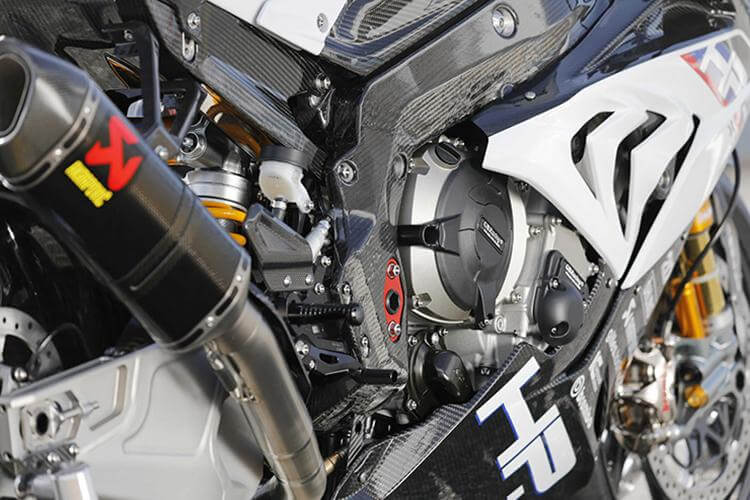Part 1: TEN HIGHEST POWER-TO-WEIGHT RATIO BIKES

Since the top speed for production motorcycles is capped at 186 mph (299 km/h) from 1999, there is no use for manufacturers claim “The World’s Fastest Production Motorcycle” title through top speeds anymore. Nowadays, the fastest road bikes are determined by how fast they accelerate.

Carbon bodywork on the Ninja H2 Carbon - Courtesy of Kawasaki
Maximum horsepower, launch control, traction control may contribute to the fast times, but weight, or the lack of it, is what makes a bike that accelerates faster. Lower mass means the engine has less to carry when charging down the straight (besides handling better).

BMW S 1000 RR HP4 Race carbon frame
In this case, peak horsepower figures on the spec sheets may wow us but it is the power-to-weight ratio that paints the true picture.
To calculate the ratio: Peak HP / weight (make sure you pick dry weight vs. dry weight to compare between bikes). The bigger the number, the lesser weight is carried by the engine power, hence theoretically faster.
2017 BMW S 1000 RR
(199 hp ÷ 175.5 kg = 1.134 hp/kg)

BMW S 1000 RR - Courtesy of BMW Motorrad
The massively popular BMW S 1000 RR is not only fast, but it does it in a smooth manner, hitting warp speeds at the blink of an eye. It’s also packed with some nifty electronics to assist the rider to go faster and safer in all conditions.
2018 SUZUKI GSX-R1000R
(199.2 hp ÷ 171 kg = 1.164 hp/kg)

Suzuki GSX-R1000R
Suzuki seemed to have gotten left behind in the superbike wars, although it was them who pioneered many new technologies in superbikes of the past. The 2017 GSX-R1000R signaled a return of the company to form. The bike features some niffy electronics and a nimble chassis, help along by being lightweight. Check out this MotoGP commemorative version.
2018 MV AGUSTA F4RC
(212 hp ÷ 175 kg = 1.211 hp/kg)

MV Agusta F4RC - Courtesy of MV Agusta
MV Agusta arguably produces the most striking and temperamental production motorcycles; some say the bikes reflect the mercurial business aspect of the company. But their bikes are not powerful, too. Case in point is this F4RC, the homologation model for superbike racing. “RC” stands for “Reparto Corse,” which means Racing Department in Italian.
2017 DUCATI PANIGALE R 1299 FINAL EDITION
(209.4 hp ÷ 168 kg = 1.246 hp/kg)

Ducati 1299 Panigale R Final Edition - Courtesy of Ducati
The V-Twin Ducati Panigale has been getting whupped in the World Superbike Championship, where the manufacturer had been previously dominant. With the debut of the Panigale V4, Ducati issued this “Final Edition” as a send-off to the V-Twin. It features some exotic stuff that are similar to the Superleggera and racing homologation Panigale R.
2018 DUCATI PANIGALE V4 SPECIALE
(226 hp ÷ 173 kg = 1.306 hp/kg)

Ducati Panigale V4 Speciale
The Ducati Panigale V-Twin may have a drool-inducing spec sheet, but it never delivered a World Superbike championship. Sure, it did win a few races but it was outgunned in the horsepower department; so it’s only natural that Ducati go V4, just like their MotoGP bike from the very beginning. There are three variants in the Panigale V4 lineup and it’s the Speciale that’s the most er… special. Although it’s now a four-cylinder, the 90o Vee configuration. The bike is the most powerful bike in the superbike class (the Kawasaki Ninja H2R isn’t eligible to enter any racing class).